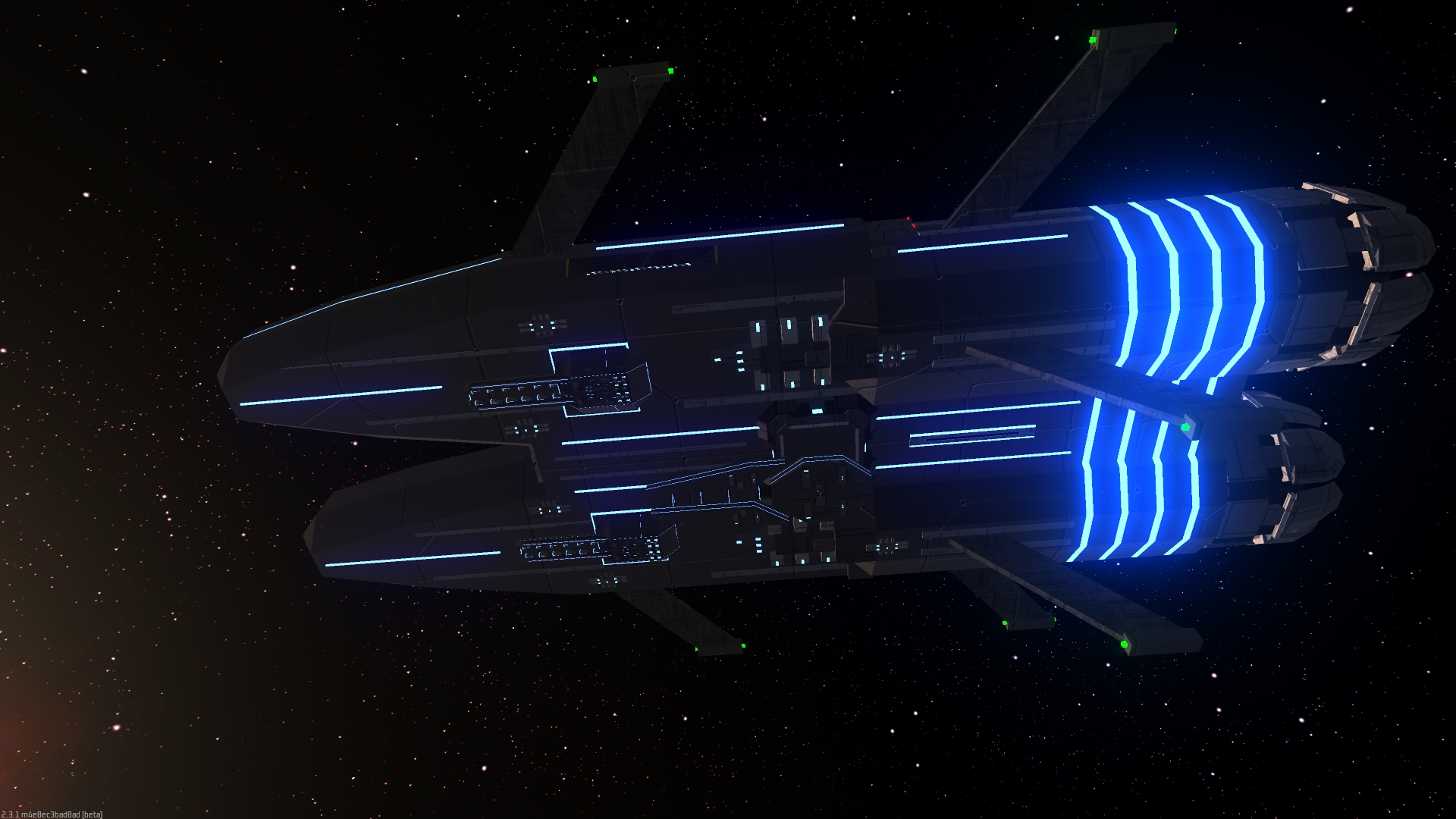Photon Missile
Large missile of the Hyperion Federation that can be armed with plasma or photonic matter warheads. The missiles themselves are incredibly fast, which is where they get the name 'Photon' Missile from. With a long range, excellent homing capabilities and high power warhead, they can be used to destroy very fast enemies as well as tough enemies. They can be countered by PDC fire though, and are easily detectable due to its huge energy emission. Best used with jammers, probably. They also require a lot of Matter Plasma to build.
Plasma warheads will cause a huge deal of damage on impact, whereas photonic matter warheads will weaken the enemy armour and shield, without completely destroying it.
The photonic warhead involves a large number of compressed photons in an exotic state of matter where photons slow down. This state is similar to Hardlight, but is not hardlight; it is much more dense but fluid-like. When released from containment, they will revert to normal state and emit an extremely bright light for an extremely short time. This can heat an enemy hull up to several hundred thousand kelvin in under a microsecond. This causes almost all materials to rapidly expand, creating cracks in the hull even in more high tech targets.
Plasma warheads are filled with quark-gluon plasma. As this warhead collides with the target, the quark-gluon plasma is released from containment which causes it to detonate and fill the area with many kinds of particles. This will generate immense forces on the armour where it hits and cause a great dela of destruction, even to spaced armour where radiated particles have enough penetrating power to pierce the outer layers.
Diffusion Warheads
As a QEN machine heats a singular object up to extremely high temperatures, it may reach a sufficiently large temperature that could trigger an explosion when released. This type of warhead is thus mostly used against heat-vulnerable targets, but remain effective against many other targets especially since a large portion of the target becomes hot enough to glow white under black body radiation. As it can take in waste heat, it is also one of the more inexpeinsive missiles the HF can field. To prevent radiation of heat from the hot object back to the missile hull, a vacuum gap is used and another object surrounds the heat object that is deisnged to reflect light within the object. This isnt perfectly efficient, but powerful QEN technology means that it still works effectively. Static Charge Warheads
Warheads that can accumulate an extremely large static electricity charge. It takes a large amount of energy from the ships antimatter reactor and places all of this charge in a single large object within the missile itself. Although this causes the missile to accumulate a massive electric charge (which can be noticed as it creates a massive electric field (and magnetic when it moves)), it can conduct this charge into the shield of an enemy target and deal massive damage to it. It can do a similar thing against the hull, which is likely to destroy and disable some equipment and electrocude some crew members of the ship.
As a QEN machine heats a singular object up to extremely high temperatures, it may reach a sufficiently large temperature that could trigger an explosion when released. This type of warhead is thus mostly used against heat-vulnerable targets, but remain effective against many other targets especially since a large portion of the target becomes hot enough to glow white under black body radiation. As it can take in waste heat, it is also one of the more inexpeinsive missiles the HF can field. To prevent radiation of heat from the hot object back to the missile hull, a vacuum gap is used and another object surrounds the heat object that is deisnged to reflect light within the object. This isnt perfectly efficient, but powerful QEN technology means that it still works effectively. Static Charge Warheads
Warheads that can accumulate an extremely large static electricity charge. It takes a large amount of energy from the ships antimatter reactor and places all of this charge in a single large object within the missile itself. Although this causes the missile to accumulate a massive electric charge (which can be noticed as it creates a massive electric field (and magnetic when it moves)), it can conduct this charge into the shield of an enemy target and deal massive damage to it. It can do a similar thing against the hull, which is likely to destroy and disable some equipment and electrocude some crew members of the ship.



Comments